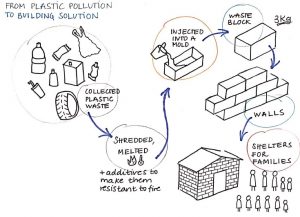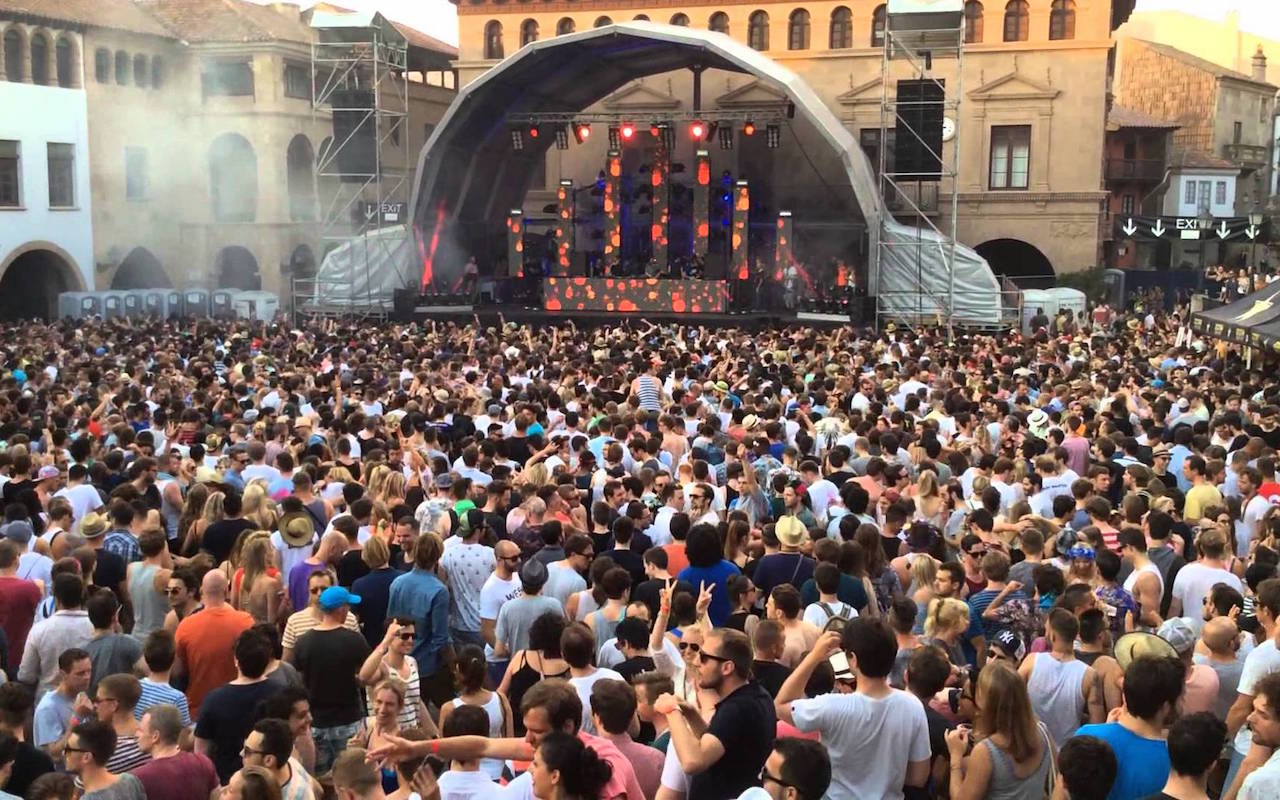Plastic is the biggest culprit when it comes to waste production; we throw away more plastic than any other material. And around 90% of all the waste that ends up in our seas and oceans. Also, it takes hundreds of years for it to biodegrade, creating a serious problem for future generations to deal with as well.
The main goal of “Conceptos plásticos” (Plastic concepts) is transforming plastic and rubber
waste into an alternative construction system for temporary and permanent homes, shelters,
classrooms, community rooms and other buildings. This prevents pollution generated by plastic
and also prevents waste from ending in dumping sites and polluting the earth. This system also
transforms plastic waste into the building materials that communities need to get a physical
infrastructure.
Ten years ago when Colombian Fernando Llanos tried to build his own house in Cundinamarca,
Colombia, he realized that moving the materials from Bogota was going to be very difficult. After mulling it over, he decided to build his house out of plastic, and after a series of trials and errors, he ended up meeting architect Óscar Méndez, who developed his thesis on the same subject, and together they founded the company Conceptos Plásticos (Plastic Concepts) in 2011.
The plastic waste that is recycled is obtained from popular recyclers and factories that discard
tons of plastic daily. It is melted and injected into a mold creating three-kilo waste blocks that
work as pieces of Lego, allowing communities and whole families to participate in the easy
construction of their own homes. The materials contain additives that make them resistant to fire and as the structure is based on plastic, it’s resistant to earthquakes. Each brick is cheaper and more fuel efficient to manufacture than conventional bricks. It also saves more energy than other ways of recycling plastic. Additionally, they are thermoacoustic and earthquake-resistant, which is up to code for Colombia, taking into account the country’s high levels of seismic activity.
They provide the communities with the required materials and give them the instructions on how to build their houses using their system. A house for a single family is built by four people, with no experience in construction and it takes only five days to build it. A shelter for 14 families is assembled by 15 people, with no construction experience, in just 10 days.
What makes it inspiring?
It inspires me how they recover and add value to materials of difficult final disposal, multi-layer
waste plastics, electronic waste and rubber, recycling and reducing the huge amounts of waste
and converting them into an alternative housing solution.
From their sustainable housing system, they reduce the quantitative housing deficit, improving the quality of life of vulnerable communities, giving them new opportunities, involving recyclers,
associations, foundations and socially responsible companies.




